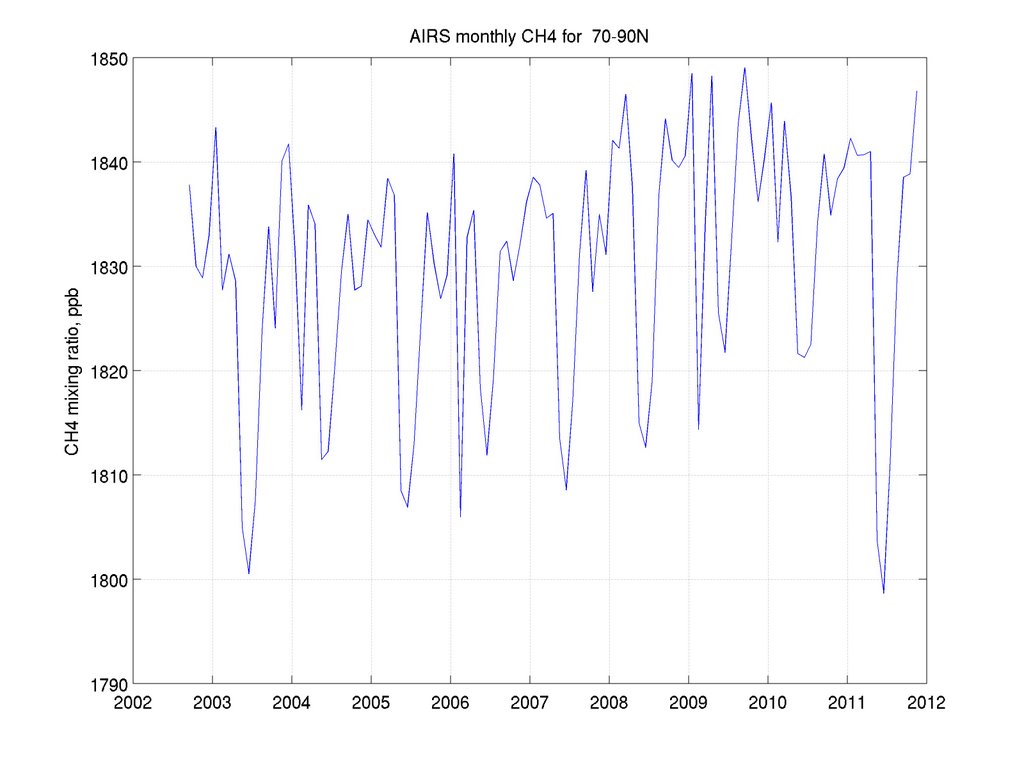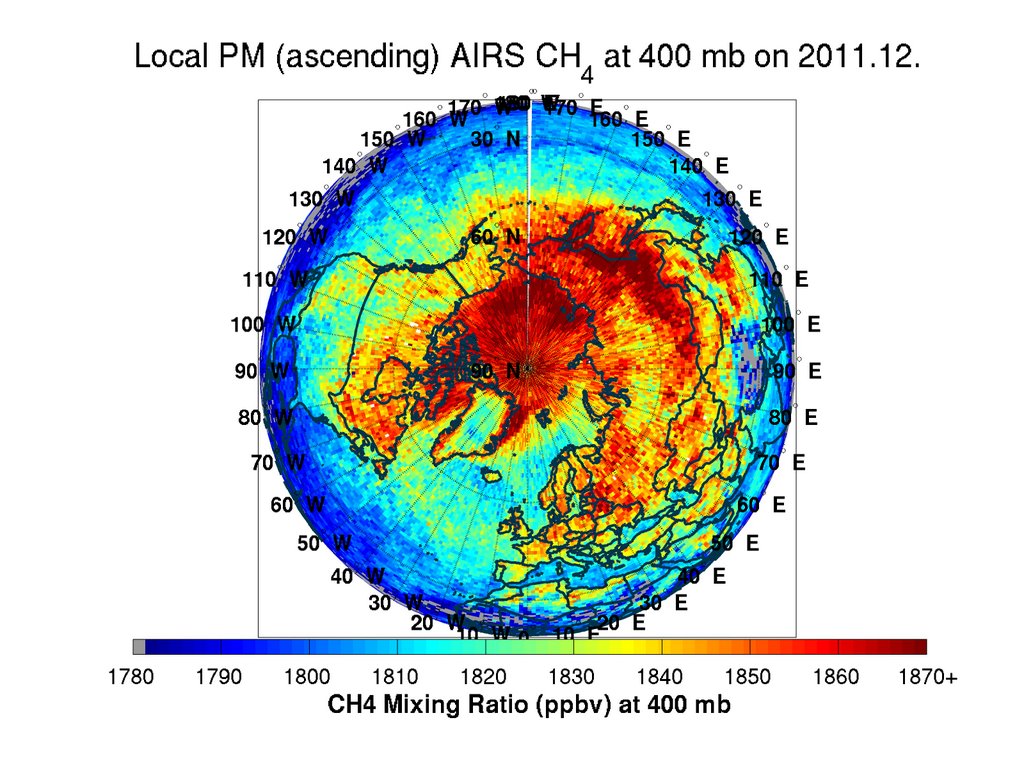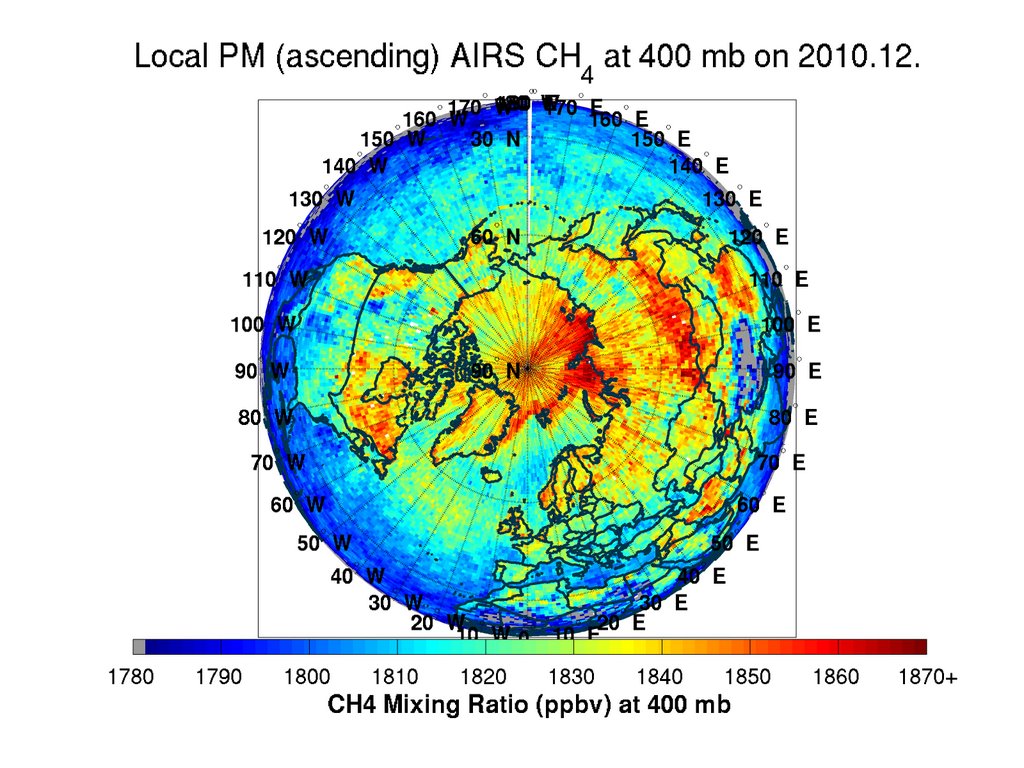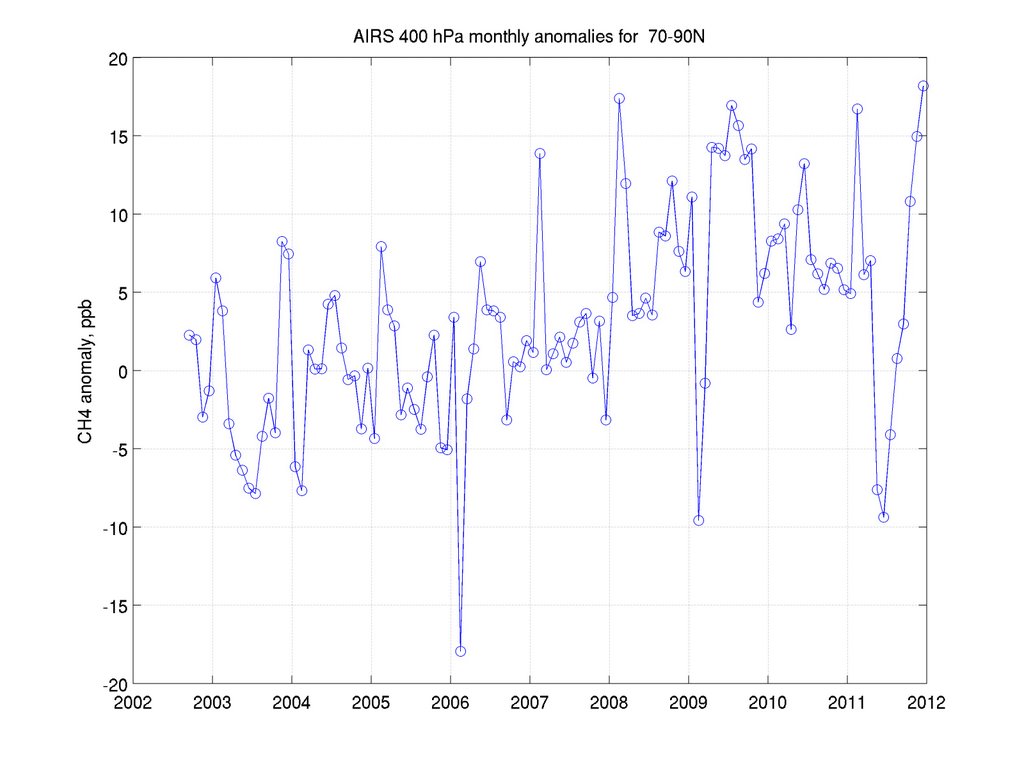-
Posts
981 -
Joined
-
Last visited
Content Type
Profiles
Blogs
Forums
American Weather
Media Demo
Store
Gallery
Everything posted by Vergent
-
Using the 14ppb number for 70-90N I get 0.9Mt C. This was for a four month period, so the yearly number would be 2.7Mt/year. This represents a 34% increase in arctic methane sourcing, over the previously reported 8Mt/year. There is a long way to go before it is a global threat. But it has gone from next to nothing to Mt/year in about three years. BTW
-
S&S just published a new paper on the ESAS. http://iopscience.iop.org/1748-9326/7/1/015201/pdf/1748-9326_7_1_015201.pdf On carbon transport and fate in the East Siberian Arctic land–shelf–atmosphere system It was submitted Aug 5, so it doesn't cover the recent findings.
-
She was holding back on the current findings because of the rules about prior publication. If she revealed the major findings in the interview, that would be considered publication. They would loose the ability to publish in a journal like Science.
-
The open waters are also making a significant contribution. 2500% supersaturation over the arctic is not trivial.
-
when in the last 800,000 years have we been in a similar situation?
-
We know that the December anomaly is 14ppb higher than 2010. This means the methane must be up at 1854ppb, off the chart.
-
Thanks! A couple things stand out. The methane is coming from >50m depth, that means that a greater portion of the methane goes into solution in the water. It also means that the mud cap over the hydrate is thinner. At much greater depth it can be on the surface. This is an a dangerous combination. The methane chimneys must be churning up the sea bottom, the sediment could then be carried away by the current, further destabilizing the hydrate by reducing the pressure on it. Just in December updates: The December 70-90 anomaly is over 10ppb higher than any previous December, and is the highest on record.
-
I see I'm not the only one haunting Yurganov's archive, waiting for the December update. Huff past is taking this seriously. http://www.huffingto...tml#postComment
-
Thanks for the link. I think I got in the first comment
-
Damn paywall. If you add in an equal amount from the arctic ocean you get this; About 8W GHG forcing by 2030, ignoring albedo feedback, which would be huge in the arctic. How could the permafrost melt not accelerate? How could the ice cap not melt? How could Greenland not melt? It seems that the "worst case scenario" is now the predicted norm. Do we need a new worst case scenario?
-
AIRS animations almost alarming. http://climateforce....ne-airs-videos/ I recommend November.
-
There are thirty pages on that website, dozens of videos, a 16 page booklet, and you read it all in a half hour, I'm impressed. http://www.independent.co.uk/environment/climate-change/shock-as-retreat-of-arctic-sea-ice-releases-deadly-greenhouse-gas-6276134.html Unfortunately the new data is not published yet, but for historical relevance, here is last years paper on the same subject. http://files.instrument.com.cn/FilesCenter/20100607/SH101432-133263.pdf
-
http://www.arctic-methane-emergency-group.org/#/letter-to-leaders/4558749249 Rember; Don't panic!!! and don't forget your towel.
-
It would not be like this; It would be more like this; The oil industry has been burning off methane from their oil fields since the start. The chemistry is simple CH4+2O2=CO2+2H2O. The resulting CO2 has 5% the environmental impact of the methane. While the methane is not good, the CO2 is 20 times less bad. The breakwater would have floodgates to allow migration and to regulate the flow of energy. It could be removed as easily as it could be built. It is a project on the scale of Kansai airport, that was built in 30 meter deep water. If the consequences were worse than the methane, it could of course be removed. But once the methane is in the atmosphere, there is little we can do about it.
-
For the record, while I am alarmed by a new source of GHG with the potential to multiply the current climate forcing, I am not panicked by it. There is a simple remediation. Ignite any strong local vents. Build a breakwater/railroad bridge across the Bering Strait. This would reduce the thermal import to the arctic by 1/3, and change the Arctic ice cap from a yearly net melt to a yearly net freeze. This would pay for itself.
-
http://www.realclima...#comment-224271 In response to comment #22 Using his own calculator http://forecast.uchi...ts/methane.html Shakhova's release of 50Gt would shoot GHG forcing up to 8w/m^2. It would drop down to 6w/m^2 in thirty years.
-
You mean this Gavin Schmidt? http://magician.ucsd...s/carozza11.pdf He was speaking of 1000Gt release over a 500 year period. That would look like this.
-
David archer has an online model for atmospheric methane release. http://forecast.uchi...ts/methane.html This is the result of releasing 16Gt over a 20 year period.(a 100 fold increase over the current 8Mt rate). This corrisponds to 1% of the known ESAS reserves being vented. With 5 watt forcing the permafrost would be vanishing very fast so lets release 1% of those reserves over the next 20 years 32Gt over 40 years. This is not good.
-
Another plain vanilla article from the NYT. Although this one did allow one oposing view. http://dotearth.blog...arctic-methane/ Saw it too late to get a high comment, but the first response made the same point I would have made. I would have added that we have not had much luck modeling arctic ice, how can we have such confidence in our methane hydrate models?
-
Nice find. That number was attributed to Archer in a 2005 paper. He must have changed his mind or funding organization, in 2007 he wrote this; http://hal-sde.archives-ouvertes.fr/hal-00297882/
-
I would be more careful of posting a bloggers interpretation of an interview. The interview was 3/5/10, so the paper was the 2010 paper that does not support the bloggers numbers. http://www.sciencema...cast_100305.pdf I don't see how he got those numbers from the interview.
-
1600GT is on the continental shelves and under ice shelves. This topic is about that methane. "The total amount of carbon preserved within the ESAS as organic matter and ready to release CH4from seabed deposits is predicted to be ∼1400 Gt. Release of only a small fraction of this reservoir, which was sealed with impermeable permafrost for thousands of years, would significantly alter the annual CH4 budget and have global implications, because the shallowness of the ESAS allows the majority of CH4 to pass through the water column and escape to the atmosphere." http://www.agu.org/p...9JC005602.shtml N. Shakhova International Arctic Research Center, University of Alaska-Fairbanks, Fairbanks, Alaska, USA Pacific Oceanological Institute, Russian Academy of Science, Vladivostok, Russia I. Semiletov International Arctic Research Center, University of Alaska-Fairbanks, Fairbanks, Alaska, USA Pacific Oceanological Institute, Russian Academy of Science, Vladivostok, Russia I. Leifer University of California-Santa Barbara, Santa Barbara, California, USA A. Salyuk Pacific Oceanological Institute, Russian Academy of Science, Vladivostok, Russia P. Rekant VNIIOkeangeologia, Saint Petersburg, Russia D. Kosmach Pacific Oceanological Institute, Russian Academy of Science, Vladivostok, Russia We went from; no observations of significant direct venting of methane to the atmosphere prior to 2009, to methane vents "tens of meters in diameter" in 2009(at least a 100 fold increase), to hundreds of fountains of methane some over a thousand meters in diameter in 2011(indicating a 50 fold increase in diameter and a 2500-fold increase in area). What is so bizarre or improbable about another 100-fold increase? With 1,400GT in the ESAS, it is hardly worst case.
-
http://www.realclimate.org/index.php/archives/2012/01/an-arctic-methane-worst-case-scenario/comment-page-1/#comment-224271 More vanilla from realclimate. They are pushing hard on this. They are still using numbers from a 2007 article that gets its numbers from even earlier articles. 200 Gt worst case??????? When there are 3,200 Gt of known vulnerable stores? 1,600 in Continental shelf hydrates, and an additional 1,600 in and under terrestrial semi-permafrost. http://darchive.mblwhoilibrary.org:8080/bitstream/handle/1912/4553/2010GB003845.pdf?sequence=1 This article shows that the indirect forcing is double the direct forcing, and the lifetime of methane in the atmosphere is greatly extended at higher concentrations.
-
http://en.wikipedia....wiki/Flatulence "The lesser component gases methane and hydrogen are flammable, and so flatus containing adequate amounts of these can be ignited."






